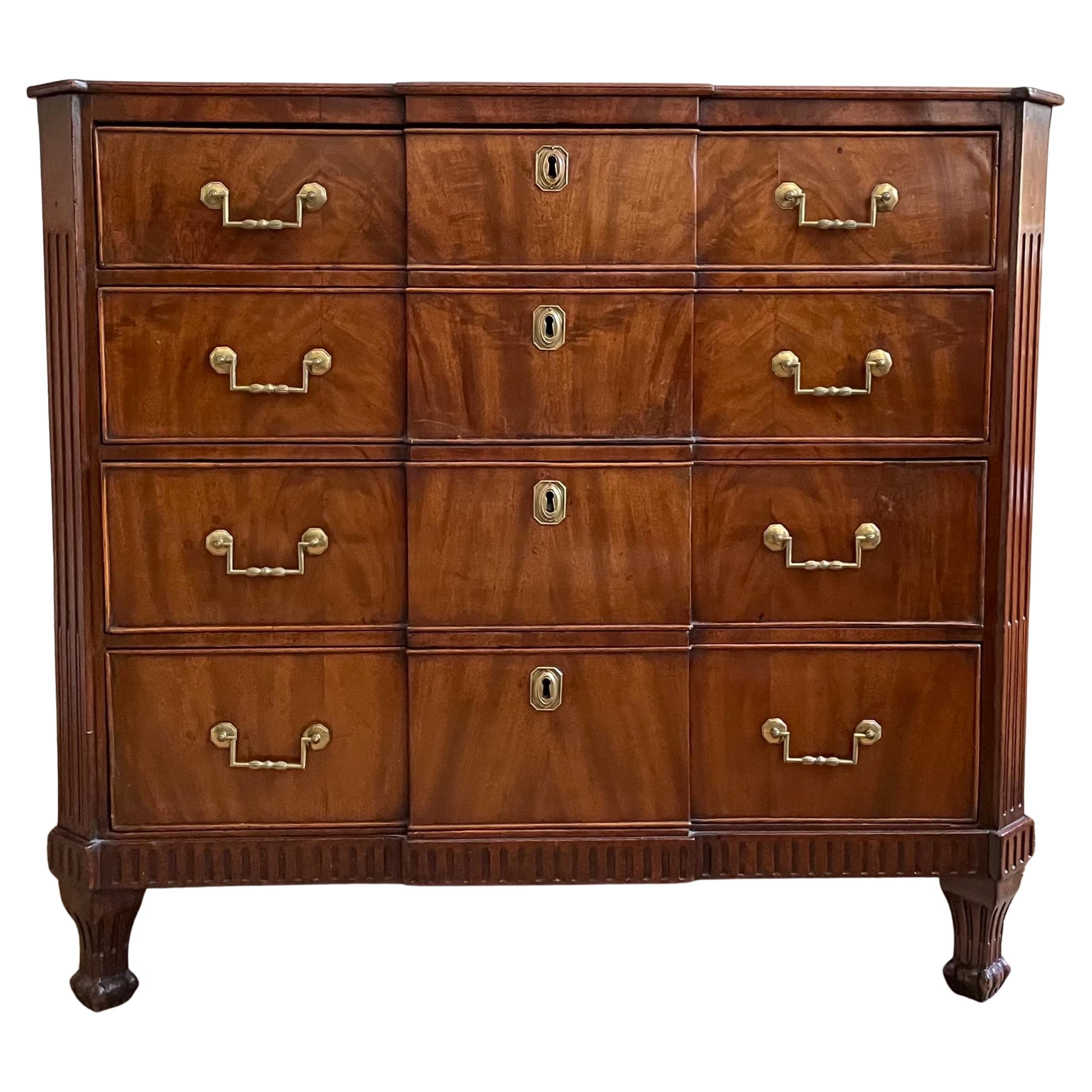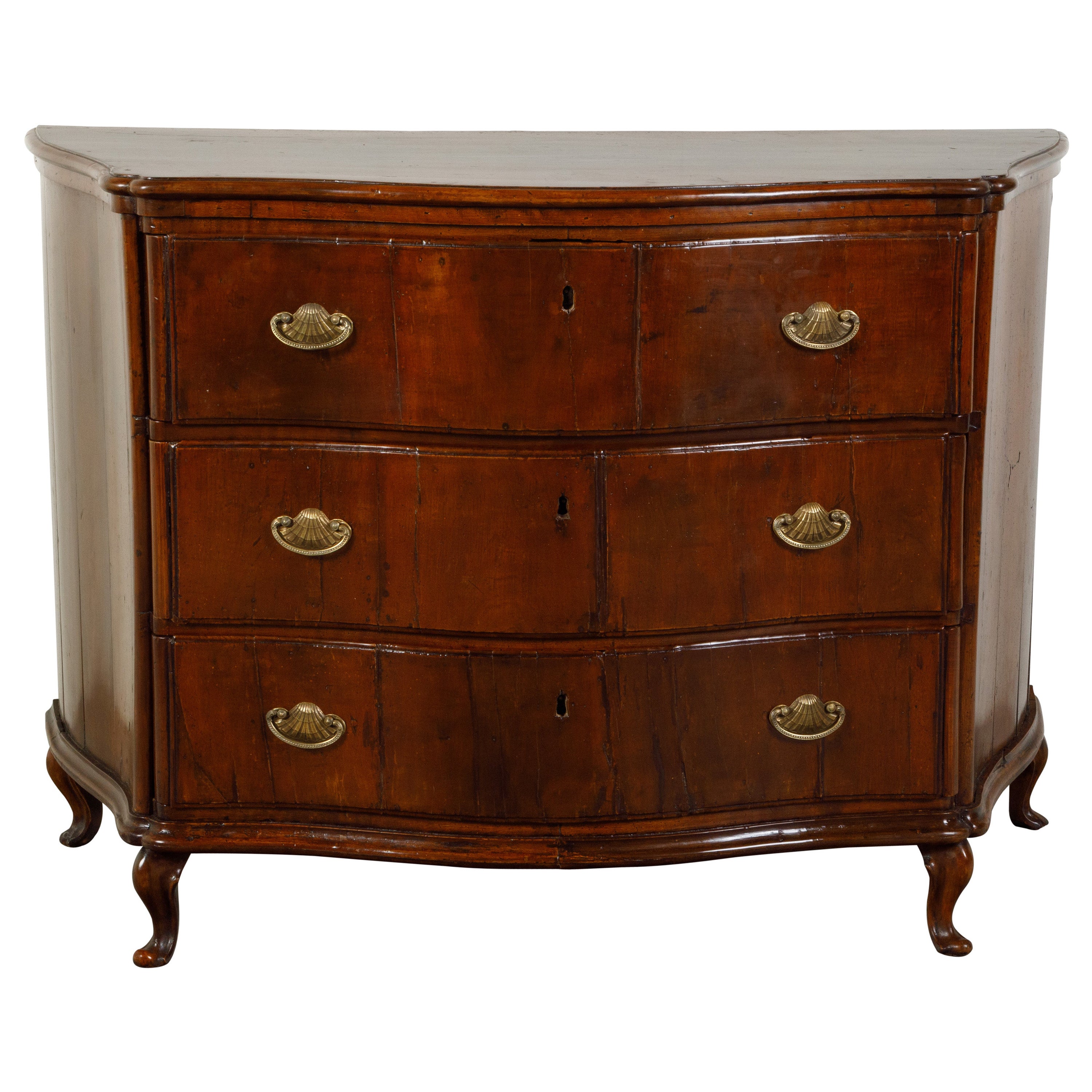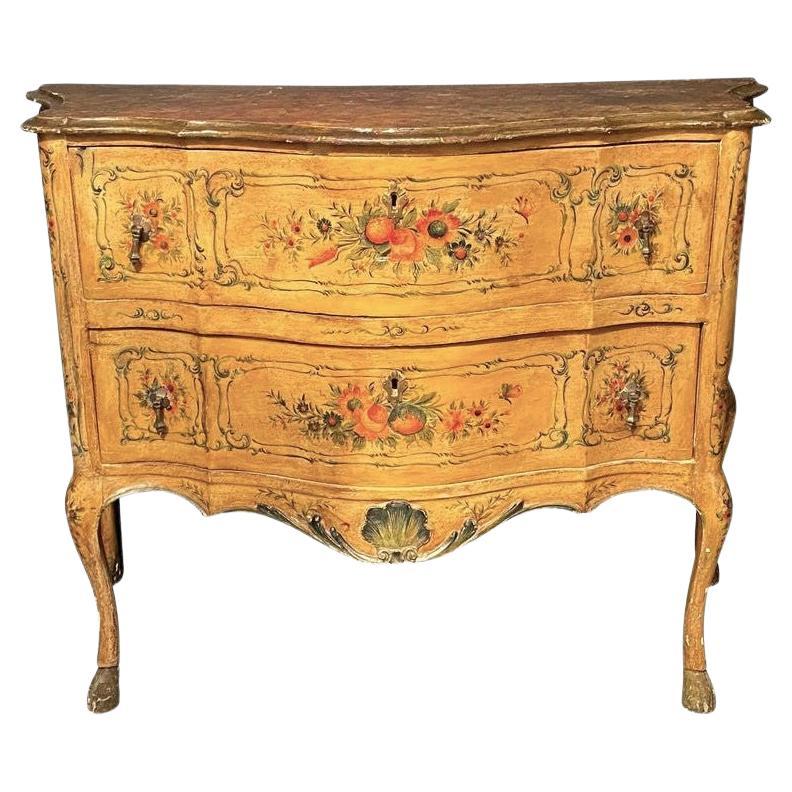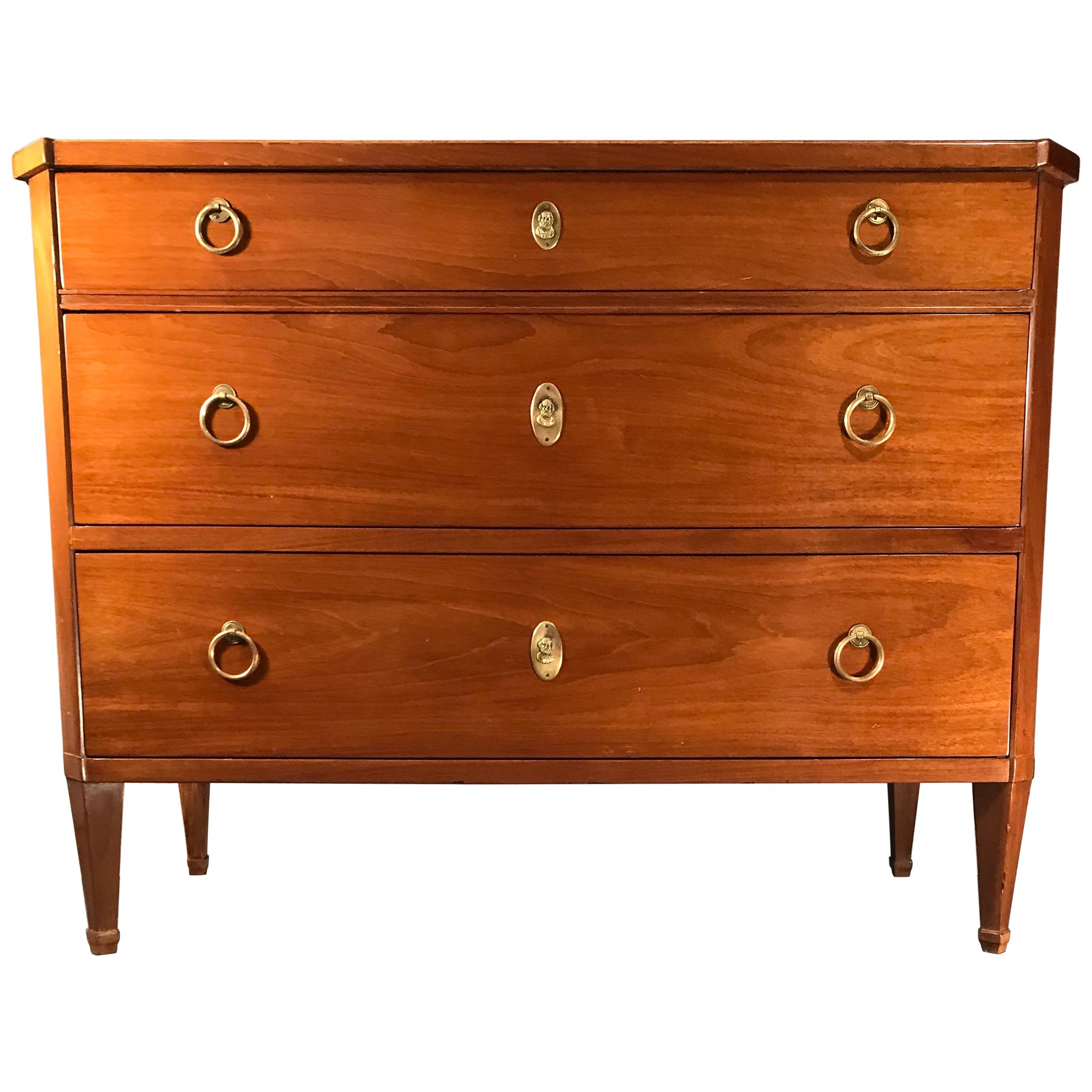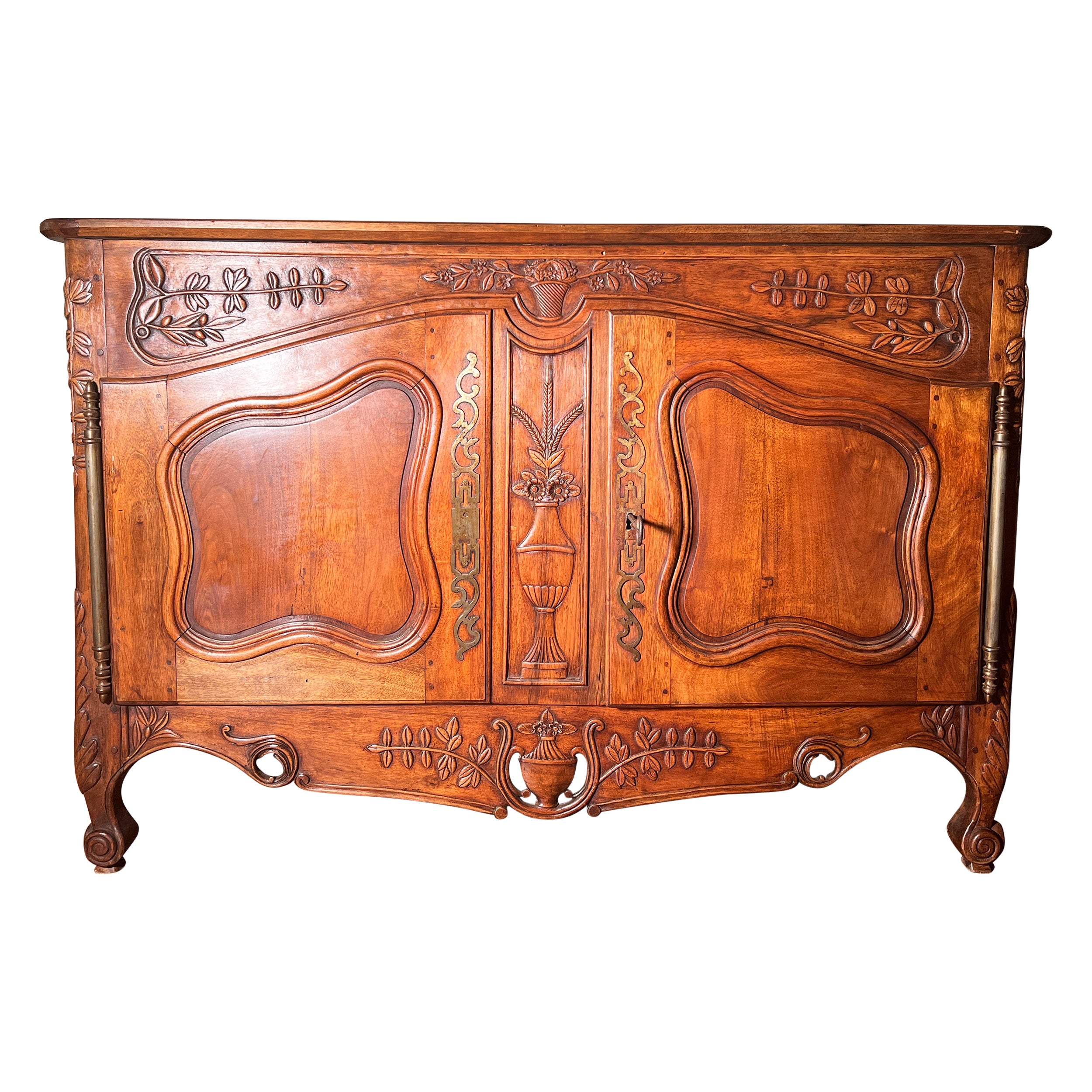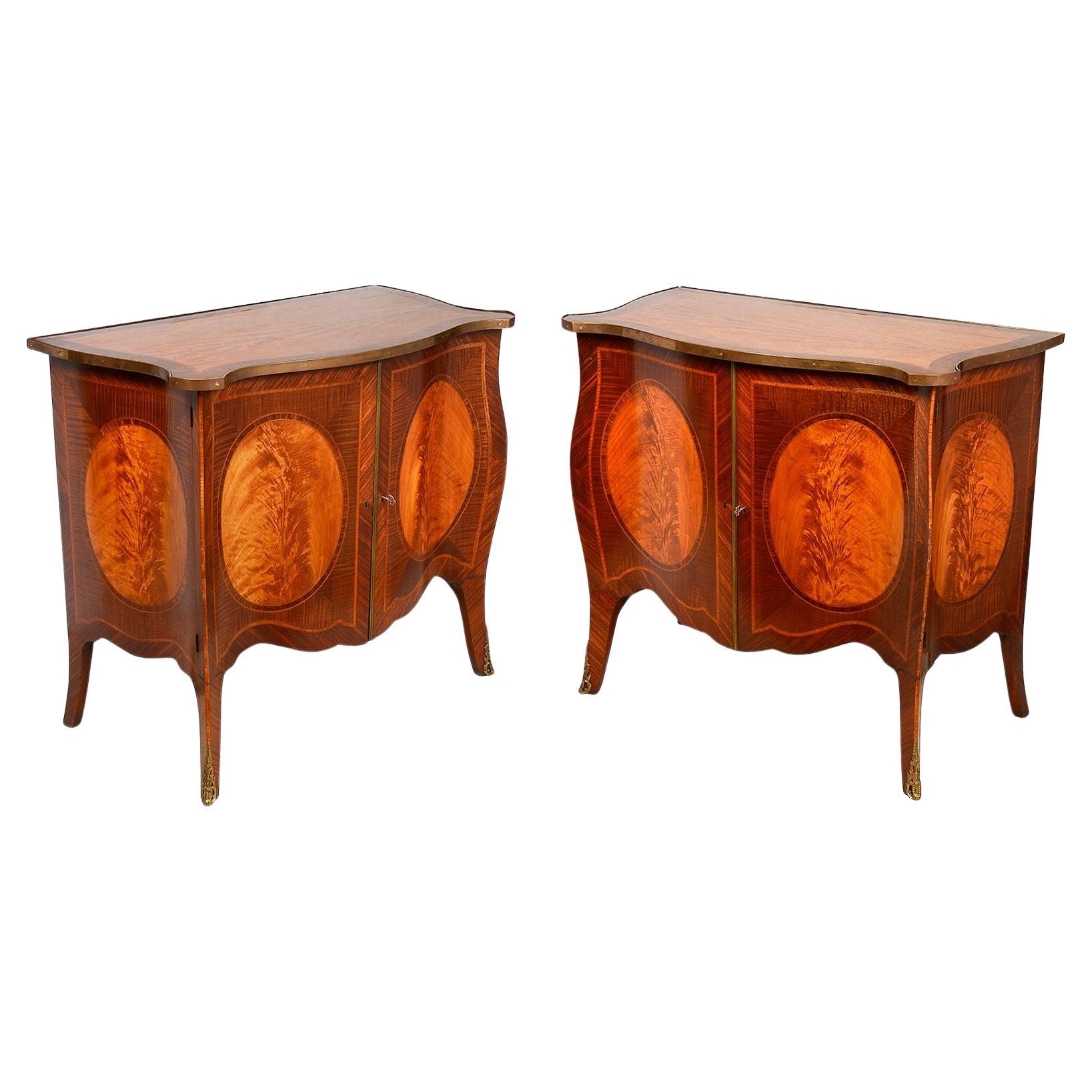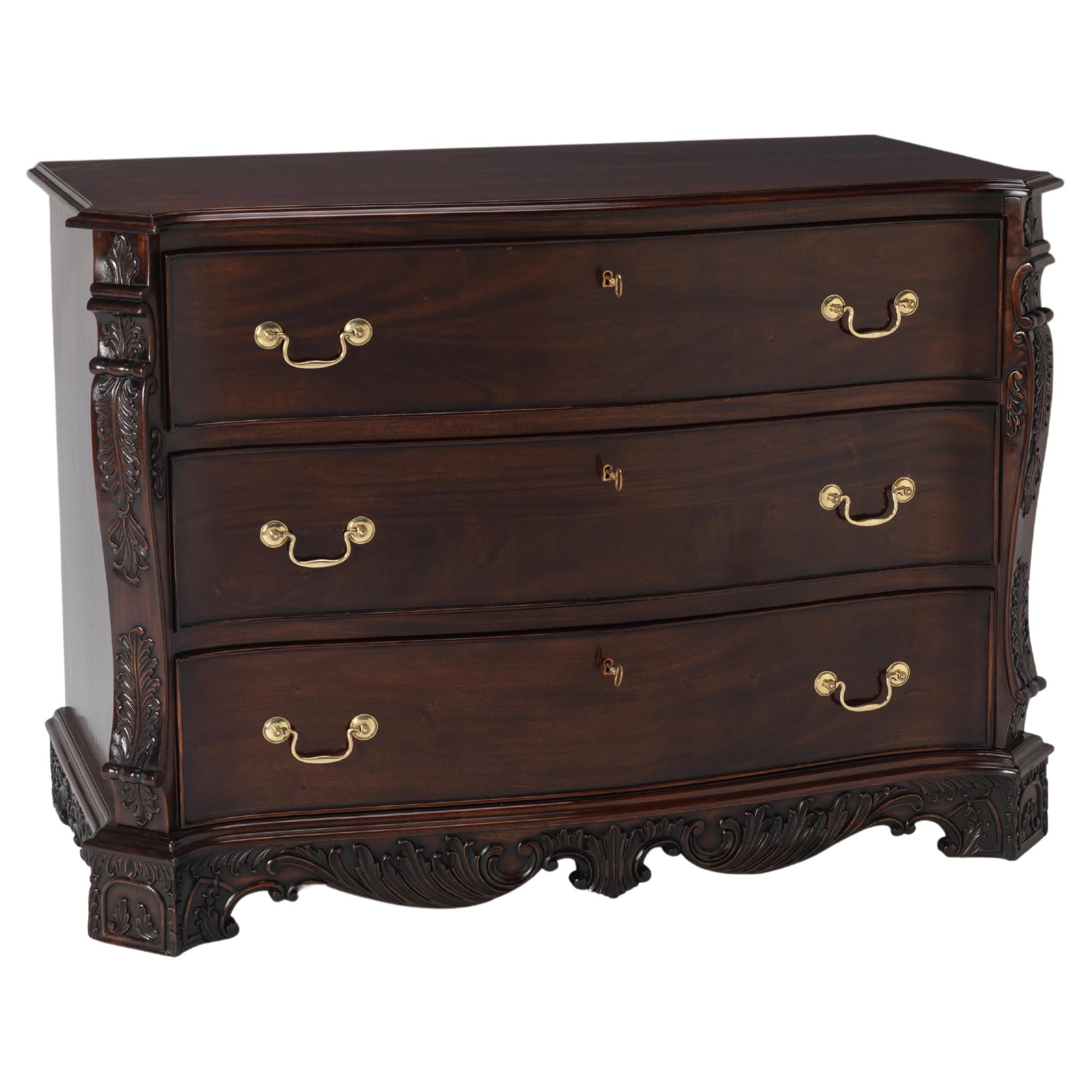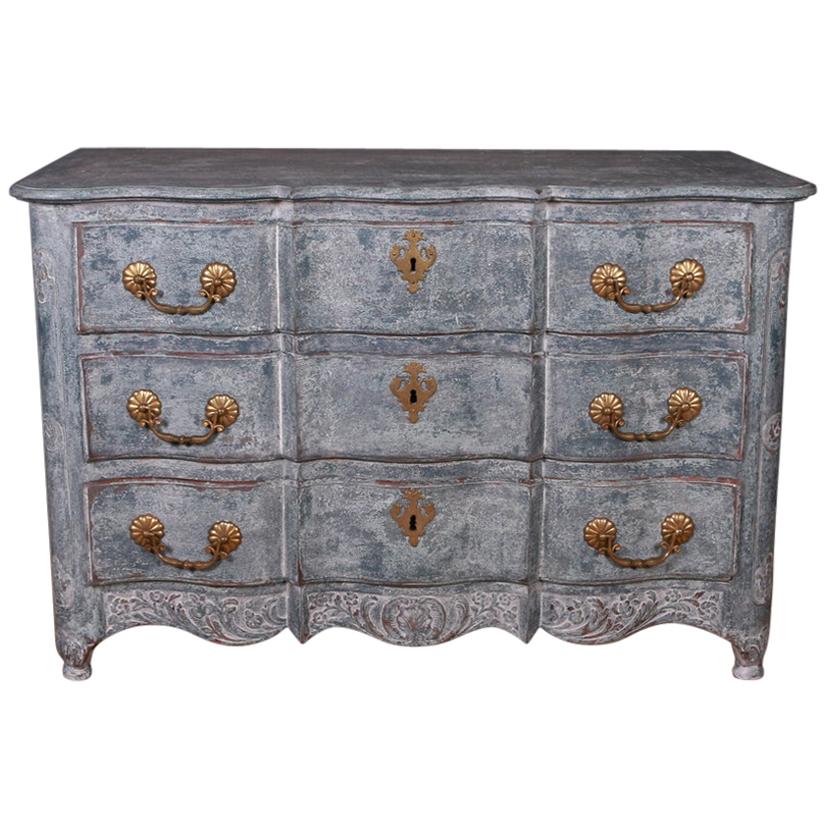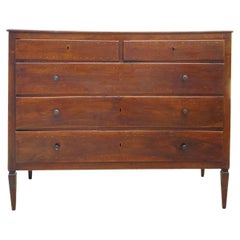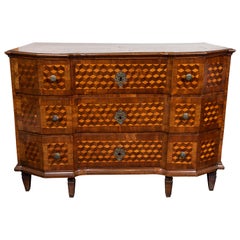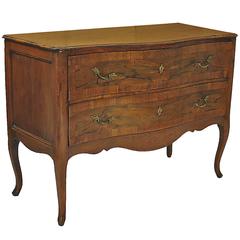
Italian Serpentine Commode, circa 1800
View Similar Items
1 of 6
Italian Serpentine Commode, circa 1800
About the Item
- Dimensions:Height: 33.25 in (84.46 cm)Width: 46.5 in (118.11 cm)Depth: 20.75 in (52.71 cm)
- Style:Baroque (Of the Period)
- Materials and Techniques:
- Place of Origin:
- Period:
- Date of Manufacture:1800
- Condition:Wear consistent with age and use.
- Seller Location:San Francisco, CA
- Reference Number:Seller: 148511stDibs: LU79047013403
You May Also Like
- Northern Italian Walnut Commode , circa 1800Located in Los Angeles, CAThe rectangular inlaid top above five drawers raised on square tapered legsCategory
Antique Early 19th Century Italian Commodes and Chests of Drawers
MaterialsWalnut
- Parquetry Veneered Italian Commode, circa 1800Located in Newport Beach, CAChic, canted corner, three-drawer, walnut and pearwood commode from Modena, Italy. Striking parquetry surrounds the piece three quarters.Category
Antique Early 1800s Italian Commodes and Chests of Drawers
MaterialsPearwood, Walnut
- Serpentine, Northern Italian CommodeLocated in Newport Beach, CAExceptional, three-drawer, serpentine, commode veneered with pear, olive and fruit woods featuring original hardware and a new, Italian, onyx top.Category
Antique 18th Century and Earlier Italian Commodes and Chests of Drawers
MaterialsFruitwood, Olive, Walnut
- Baltic Commode, Circa 1800Located in New York, NYThis mahogany commode has the fluted rails and canted corners typical of case furniture made along the coasts of the Baltic and North Seas around 1800. More difficult to pinpoint, however, is the exact place of its making, since this geographical region stretches from Germany to Russia, and north from Poland to Scandinavia. That said, a strikingly similar, if slightly plainer commode in a private German collection bears an old paper label that identifies it as having been made in the city of Altona. It also bears the seal of King Christian VII of Denmark who reigned until 1808. At the time, Altona was in the independent Duchy of Schleswig-Holstein, located between Denmark and Prussia. Both nations tried to annex the Duchy, and in 1848 it was ceded to Prussia, which became part of Germany in 1871. A North Sea port, Altona was a member of the Hanseatic League, an association of seaports that was established in the 14th century to foster trade and police the high seas. Around 1800, the aforementioned King Christian of Denmark, who was also the Duke of Schleswig-Holstein, allowed Jews to freely settle in Altona to increase the tax base. This allowed them to conduct business in neighboring Hamburg, a larger financial hub that maintained quotas. The prosperous Jewish families of Altona built villas there, and decorated them with furnishings that were made locally and imported. Many of those makers owned copies of furniture-pattern books, which were widely disseminated among these seaports, accounting for the difficulty in determining if a piece was made in Altona, Stockholm, or St. Petersburg. We can’t trace our commode to a Danish king or a known Altona merchant, but we can link it to the New World empire builders...Category
Antique Early 1800s German Neoclassical Commodes and Chests of Drawers
MaterialsBrass
$20,000 - Italian 1800s Walnut Three-Drawer Serpentine Front Commode with Bronze HardwareLocated in Atlanta, GAAn Italian walnut commode from the early 19th century, with three drawers, serpentine front and bronze hardware. Created in Italy during the early years of the 19th century, this wal...Category
Antique Early 19th Century Italian Commodes and Chests of Drawers
MaterialsBronze
- Italian Floral and Fruit Painted Serpentine CommodeLocated in Nashville, TNFloral and fruit decorated sides, front with faux marble top. Colorful.Distressed paint condition Typical paint issues, chips, nicks ,dings paint loss (esp to lower legs and hoof f...Category
Antique 19th Century Italian Baroque Commodes and Chests of Drawers
MaterialsWood



